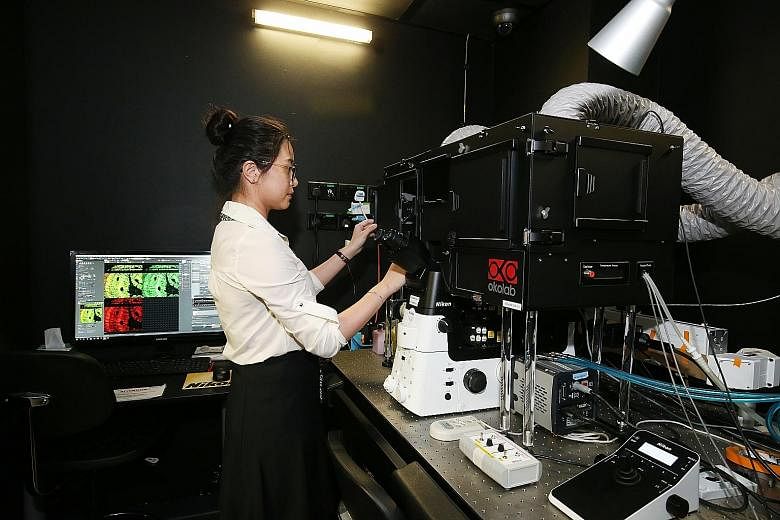Local universities and research centres will enjoy substantial savings as licences for certain microscopes will no longer be required a decade after the National University of Singapore (NUS) first asked for the rule to be reviewed.
The Ministry of Trade and Industry's pro-enterprise panel had also pushed for the lifting of the N3 licence for the microscopes. The National Environment Agency (NEA) lifted the rule last October.
Citing the lifting of the licence as an example, Senior Minister of State for Trade and Industry Chee Hong Tat, who was visiting NUS yesterday, encouraged regulators to find better, creative ways to set rules and support new ideas and new business models.
"We need to constantly ask ourselves if there is a smarter, more efficient way to regulate while ensuring safety and lowering the cost of compliance," said Mr Chee.
"By working together with users, we can maintain safety while reducing the cost of compliance," he said.
He added that the pro-enterprise panel is looking to expand its work across multiple sectors and agencies, including food services, logistics and infrastructure projects.
In the past 10 years, NUS has spent around $465,000 and 1,070 man-days to certify its confocal microscopes under the NEA's N3 licence regulations.
Instead of using light, these special microscopes use lasers to illuminate specimens under the lens.
The confocal microscope is used extensively today in scientific research, particularly in the fields of life sciences and materials science, and for inspecting semiconductors.
More than 300 researchers and members of staff at NUS use confocal microscopes embedded with Class 3b and Class 4 lasers.
N3 user licences for these microscopes are now not required at NUS and other institutes of higher learning, such as Nanyang Technological University and the Agency for Science, Technology and Research, if laboratories follow safety guidelines.
Professor Chen Tsuhan, NUS deputy president of research and technology, said the risk of exposure to radiation when using these microscopes is very low, and licensing alone does not reduce or mitigate any risk when using the equipment.
"Licensing all the microscopes under the N3 licensing system has led to tangible costs of about $70,000 per year at NUS. That aside, it is really the long waiting time required before the researcher can work with the microscopes that tends to hamper the research process," Prof Chen said.
Under the new licensing programme, 11 microscopes at NUS are now exempted from the N3 licence.
Prof Chen said additional safeguards have been put in place to ensure proper use of the microscopes.
For instance, staff must undergo laser safety training courses, and safety shields have been installed to prevent stray laser light from escaping the machine.
Prof Chen added: "We are waiting eagerly for the NEA to change the licensing regime to allow for site licences as well."
Meanwhile, NUS must continue pushing for licensing changes, he said, as delays in researchers being allowed to use the equipment they need may mean lost opportunities.
"Professors and researchers can be much more productive and competitive if they do not have to wait for licensing to come in."


